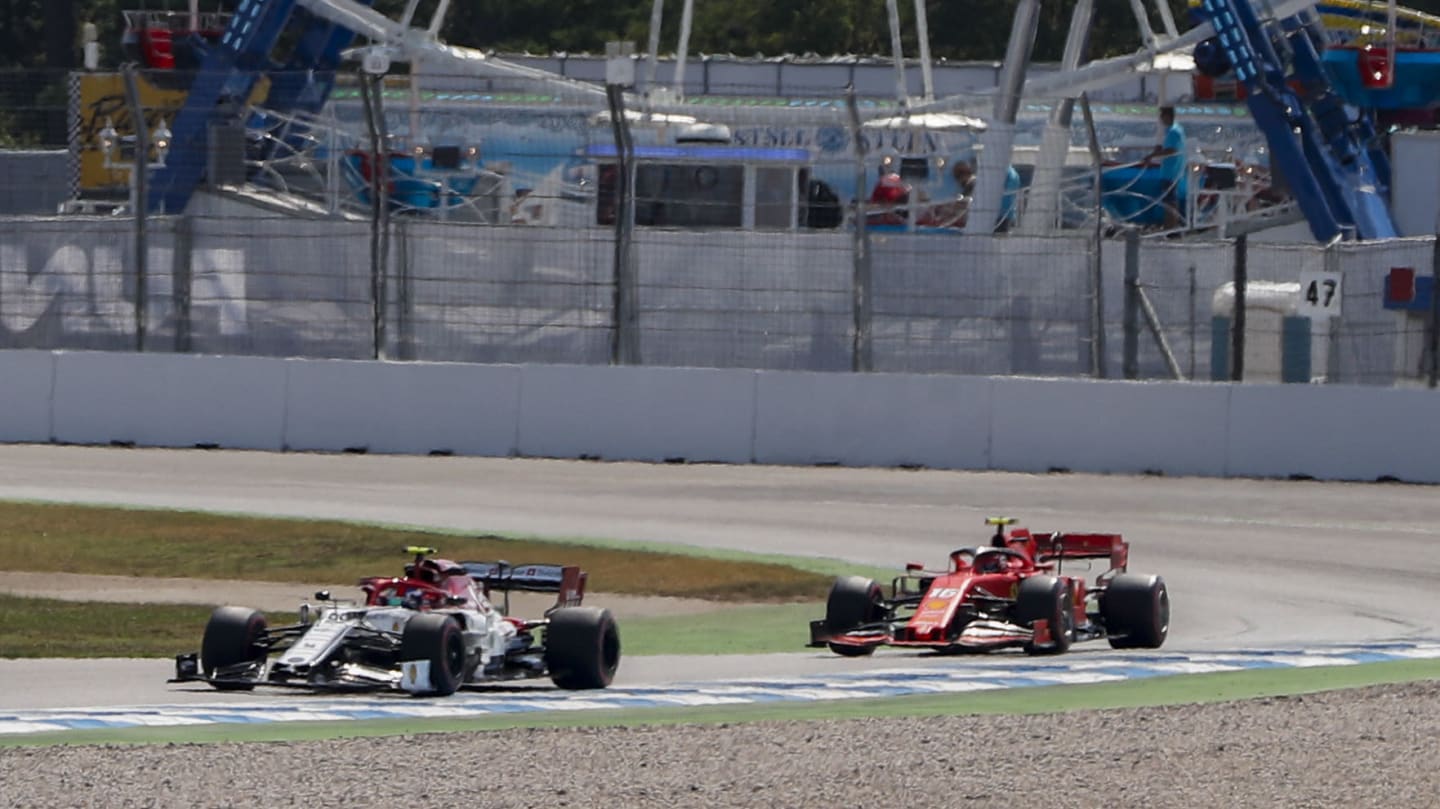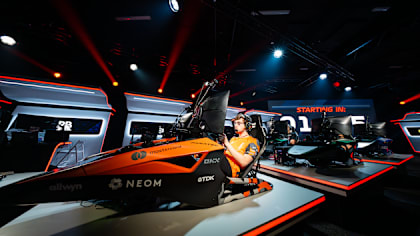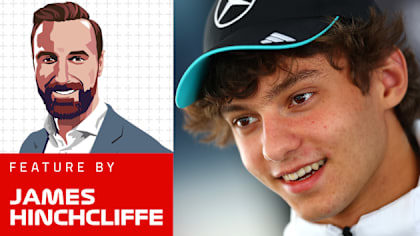Feature
Trackside Performance Analysis: Verstappen vs Gasly and more at Turn 12

Share
To understand the subtleties of car performance and driver technique, there’s no substitute for standing trackside and watching (and listening to) the protagonists at work. In FP1 at Hockenheim, analysis from Mark Hughes shows how drivers make – or lose – time at the high-speed Turn 12...
Turn 12 is the entry to Hockenheim's famous Stadium Section, a dramatically fast right-hander approached still under acceleration out of 11. They will have just snatched sixth gear, lifting briefly, turning, and then back on the gas almost all in one fluid moment completed well before the apex.
It used to be a corner where the differences in aerodynamic grip between cars was very obvious, but with this generation of car, smothered in downforce, the distinctions have become more subtle and only obvious after a few minutes of observation.
Although there was relatively little difference in speed between even the fastest and slowest, the difference lay in how much steering lock was needed. Only the Mercedes pair and Max Verstappen’s Red Bull looked perfectly balanced through here, with enough rotation on the car from initial turn-in that relatively little steering lock was required through the corner. Every other car had understeer here to a greater or lesser extent.
The Red Bull did want to understeer. It’s just that Verstappen was manipulating it wonderfully well on turn-in
There were others struggling with more than just a shallow bit of understeer though. The Renault’s balance changed through the corner, finally picking up some rotation mid-turn. This made it very awkward for the driver, as the lock required in response to the initial understeer only enhanced the balance change as the front finally gripped up – too late into the corner.
Daniel Ricciardo dealt with it using a lot of commitment, carrying the speed regardless, even as it appeared that he would surely run wide, anticipating that the rotation would come despite what his senses told him. It sometimes resulted in a wild ride beyond the extremities of the blue and white exit kerbing and onto the green-painted concrete beyond. Nico Hulkenberg didn’t choose to carry the same entry speed, as he gave a longer lift around turn-in.

Antonio Giovinazzi's Alfa leads Charles Leclerc's Ferrari around Turn 12 during FP1 (Photo by Steven Tee / LAT Images)
Although Max Verstappen’s Red Bull looked beautifully balanced as it went through the turn, step back to the preceding approach and his input into creating that balance becomes clear – when the comparison is made to team mate Pierre Gasly.
The Red Bull did want to understeer, after all. It’s just that Verstappen was manipulating it wonderfully well on turn-in, pitching it in with the precision required to exaggerate the rotation without that building into instability. Gasly could not seem to summon this confidence and appeared not to be feeling the front end of the car as well. Several times he resorted to exaggerating his steering movements as if trying to generate front tyre temperature. He was trying to steer it from an uncooperative front while Verstappen showed it’s possible to steer the RB15 from the back instead.
Such things make all the difference - Verstappen ending the session half a second quicker than his team mate.
YOU MIGHT ALSO LIKE

Video WATCH: Lawson out, Tsunoda in – Laura Winter and Lawrence Barretto discuss Red Bull’s driver call
Video LIVESTREAM: Watch all the Round 11 action from the 2025 F1 Sim Racing World Championship at the Lusail International Circuit
FeatureF1 Unlocked THIS WEEK IN F1: 10 quiz questions on the Chinese Grand Prix and the latest F1 news
OpinionF1 Unlocked HINCHCLIFFE: Mercedes took a huge gamble on 18-year-old rookie Antonelli – but he already looks like the real deal



